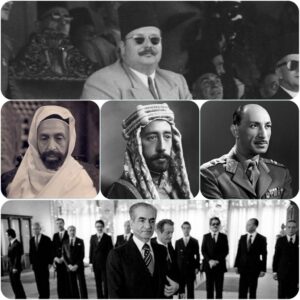While most of Europe’s monarchies dissolved in the end of the 18th century, the MENA region still has a substantial number of monarchies; many of which face many challenges to their rule and could potentially follow suit of failed monarchies such as Iran, Iraq, Egypt and Libya. Arguably, monarchies survive depending on whether they follow the guiding characteristics of their type of monarchy; for example, linchpin monarchies have “survived because of their broad, inclusive, and pluralistic regime coalitions,” while dynastic monarchies survive on a narrower societal base (Lucas 2004, 9). Also known as the “king’s dilemma,” linchpin monarchies, such as Egypt and Iraq, failed to establish their legitimacy among their people by catering to narrow elite interests failing to incorporate the growth of the new middle class. Even though the MENA region and its strategic oil rent often grants regimes greater institutional flexibility in managing the regime’s citizenship, “economic and external assets could not save regimes that were entirely divorced from a social base” (Lucas 2004, 117). On the other hand, dynastic monarchies are weakened by the limited pool of personnel to guide leadership; for example, in 1958, Iraq was led by Prince Abd al-llah, a young playboy, with weak advisers and was ambushed by a violent military coup killing the entire Hashemite ruling family. Whereas in Iran, the monarchy leaned too hard into coercion; where the military became tired of oppressing and killing civilians and toppled the monarchy during the 1979 revolution.

Overthrown monarchies in MENA
In his work ‘Monarchical Authoritarianism: Survival and Political Liberalization in a Middle Eastern Regime Type,’ Lucas argues that the longevity of monarchical rule in the Middle East is something more than the persistence of traditional Islam, but also the ability to control and use political liberalization as a survival strategy. Lucas argues that political liberalization, allowing the mobilization of civil society, “provides an opportunity for a monarchical regime to activate “divide-and-rule” policies and re-calibrate social balances of power” (Lucas 2004, 11). However, the 2011 Arab Spring, demonstrated how political mobilization and energy can also be a challenge for the monarchy; however not an impossible challenge. Jordan and Morocco demonstrated how monarchies could survive political activism even without oil wealth. For example, Morrocco responded to protestors’ demands by creating a commission to explore constitutional reform and to hear the grievances of the people, otherwise known as “playing for time” and diffusing political energy (Khatib and Lust 2014, 199).
To confront challenges to their monarchical rule, successful regimes often have a flexible form of rule by regime-led state formation and national building (Lucas 2004, 104). This means that rulers often encourage pluralism among social groups, because “monarchies are better able to serve as the central focus in balancing, manipulating, and controlling societies characterized by such vertical cleavages, particularly when those are reinforced by ‘antiquity of blood,” acting as the linchpin of the political system amongst tribal, religious, ethnic, and religious divisions (Lucas 2004, 107). Unlike the Saudi-family ruling the kingdom, linchpin rulers are still the main center of power but are not involved in the day-to-day politics of the country. However, on the other hand, dynastic monarchies offer self-interested competition within the ruling families that allow the regime to “channel family disputes into patterns of constructive competition” (Lucas 2004, 109).
Bibliography:
Khatib, Lina, and Ellen Lust. 2014. Taking to the Streets: The Transformation of Arab Activism. Baltimore, MD: The Johns Hopkins University Press.
Russell, Lucas. 2004. “Monarchical Authoritarianism: Survival And Political Liberalization In A Middle Eastern Regime Type” International Journal of Middle East Studies 36, 1: 103-119 [pdf]
